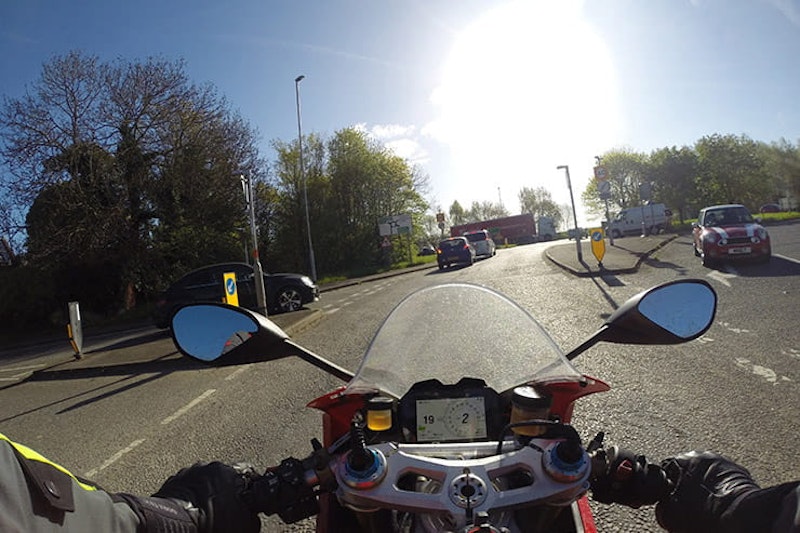Rider Skills: How not to crash at urban junctions
By Gary Baldwin
Director of Rapid Training
09.01.2019
Gary Baldwin has a very particular set of skills. Firstly, he is a highly experienced crash investigator for the police. Secondly, he is an ex-police motorcyclist who now runs the highly respected Rapid Training. And thirdly, he’s an ex-racer. So he’s fast, can teach and knows the most common ways we crash. Here’s his guide to staying sunny side up.
The most common site for all crashes is a junction. Specifically, you’re on the main road and there’s a junction on the left from where a vehicle will emerge. Previously we’ve covered country/rural junctions, as these tend to be where the really horrible crashes are because speeds are higher. But the town or urban ones are more common and definitely worth avoiding. Here are the main ways to stay out of trouble:
Road positioning is good – assuming our rider just drifted right to create some lateral movement – but 36mph is too fast given that either of those two could make a dash for it (plus it’s a 30 limit)
Urban crashes are slower, which is good, right?
Yes. The slower you go, the more chances you’ve got that the driver is going to get it right and if we do see a car starting to move then we have much more chance of doing something about it. But despite this, as a crash investigator, it’s still a very common crash. And even though a low speed crash might not kill you, it's still going to hurt.
So what should I be thinking about?
A lot of it comes down to putting yourself in the driver’s mind, and a lot of that is about visibility. What's behind you is very important. We’ve had several crashes lately where there was a car directly behind the rider with its lights on and the motorcycle was lost – the driver at the junction just could not see it.
Speed is sensible, given the potential for drivers taking a lunge. If it was night, our rider would have to be more careful because they could be made all but invisible by a 4x4’s headlights behind them
What can we do about that?
An important technique is lateral movement, where you move across from one side of your lane to the other – I’d suggest you move steadily away from the danger. From the driver's point of view you're then not just a dot coming towards them, but you're something travelling across their line of vision. That makes you much easier to spot. Doing this is more important in town because there's a much greater chance that there will be a vehicle right behind you, its lights blazing. And if there’s a ruddy great truck behind you, if you don’t move you're just a mascot and almost invisible. Moving laterally also has the advantage of shifting you across the middle of the lane, where that HGV doesn't have lights.
Our rider is slowing for the junction anyway, but needs to keep focused on that car pulling out of the drive
What other factors are there?
Most motorcycle accidents happen in the dry at weekends. But not the urban ones because a lot of these riders are out in all weathers and the crashes are more common when the visibility is reduced. That's the situation when I'd advocate wearing high visibility gear. I’m no big fan of it in general, but when it’s foggy or raining hard, I’d suggest doing anything you can to increase your visibility. Also the highway code advice is to wear bright reflective gear, so if it does go wrong and you're not doing that, you’re slightly on the back foot. Of course, it’s not just to do with drivers being able to see us – with a steamed-up visor with rain streaming down it, our vision is reduced far more than the drivers’. It all needs taking into account.
Anything else?
You have to think about how busy the junction is, because if it's busy and drivers are waiting, they will take more chances. All the safety margins get compressed, and then they are compressed further if the visibility is reduced. There is no magic cure to this – you just have to be more aware that when the visibility drops at a busy junction, you are more at risk. Then you have to work hard to give drivers the best chance of making the right decision. Sailing past a busy junction assuming it’s all going to be ok because you’ve got right of way really is not a wise option.

